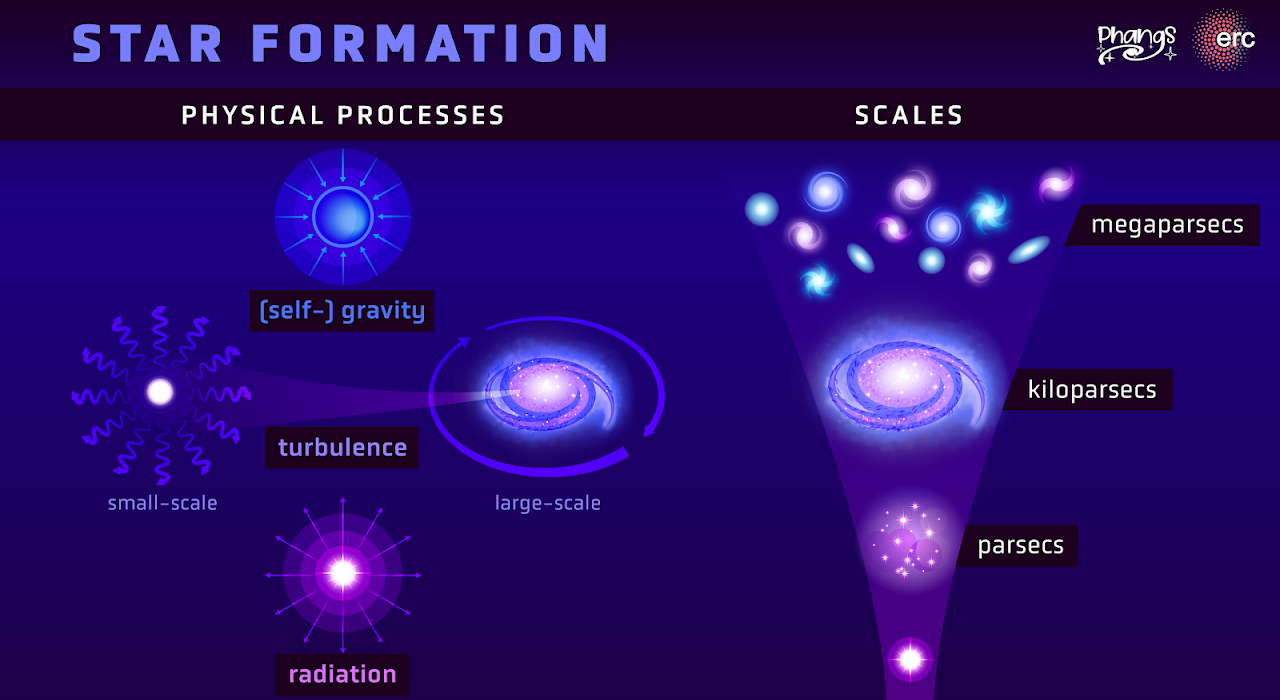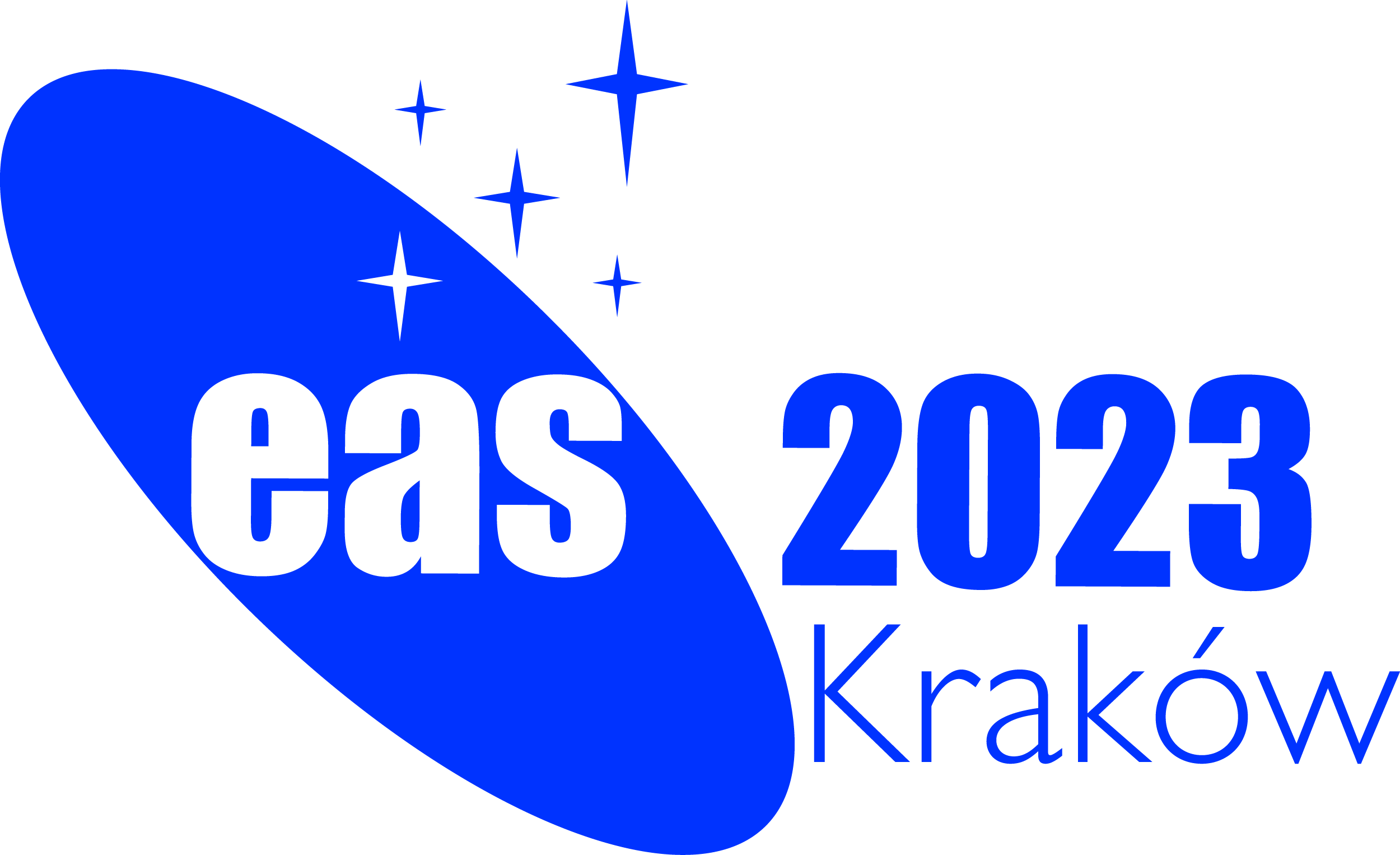Special Session SS25
11 July 2023
Star formation scaling relations across physical scales and cosmic time

Aims and scope
The scaling relations between stellar mass, gas mass, and star formation rate contain a direct imprint of the physics that regulate star formation within galaxies. They provide a direct observational constraint for star formation models (both very high spatial resolution, as well as cosmological simulations), and inform the relative importance of the various constituents (stars, gas etc.) of a galaxy. Over the last decades, huge strides have been made in linking the stellar mass, gas mass, and star formation across statistical samples of galaxies and resolved regions, highlighting the importance of accounting for the multi-phase interstellar medium, and also revealing that there is some physical scale at which these scaling relations break down entirely. A better understanding of the key aspects that drive variations in these scaling relations (and the interplay between these quantities) is crucial to grasp the mechanisms that modulate the formation of stars, shaping the evolution of galaxies.
The aim of this special session is to bring together the Galactic and extragalactic communities to discuss the physics driving these scaling relations, how they vary within galaxies and across cosmic time, and how physical scales affect our measurements. Gaia now allows us to probe the 3D nature of the Milky Way in unprecedented detail, to directly address how geometry biases our results. With instruments like ALMA and MUSE pushing to high (<100pc) resolution in local galaxies, and kpc scales at higher redshift, we can now address how scaling relations vary within and between galaxies, and how these relations have evolved over cosmic time. And, with the recent launch of the JWST, a new window will soon be opened up on the highly embedded star formation in the local Universe, as well as high spatial resolution measurements of stellar mass and star formation at cosmic noon and beyond. Only through synthesising these various studies will we be able to grasp the mechanisms driving star formation, and influencing galaxy evolution.
This special session will bring together observers and modellers to connect scaling relations from individual molecular clouds to some of the earliest galaxies across three 1.5h sessions. We will place observations from, e.g. Gaia, ALMA, MUSE, and JWST in the context of both cosmological and resolved simulations, to set the priorities for future observations at world-leading facilities.
Programme
- Scaling relations in the Milky Way, and the effects of 3D geometry
- How scaling relations vary between individual star forming regions across the local galaxy population
- Scaling relations over cosmic time
Invited speakers
- Jouni Kainulainen (Chalmers)
- Cecilia Bacchini (INAF)
- Sarah Leslie (Leiden Observatory, University of Leiden)
Scientific organisers
- Thomas Williams (University of Oxford)
- Kathryn Kreckel (ARI/ZAH)
- Ismael Pessa (AIP Potsdam)
Contact
thomas.williams @ physics.ox.ac.uk
Updated on Mon Jan 16 15:34:25 CET 2023
|

 A power cut will shut down all EAS services on Tuesday, 10 January 2017 starting at 7:30 CET.
A power cut will shut down all EAS services on Tuesday, 10 January 2017 starting at 7:30 CET.


